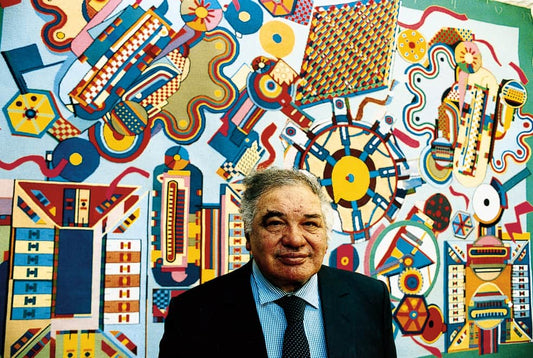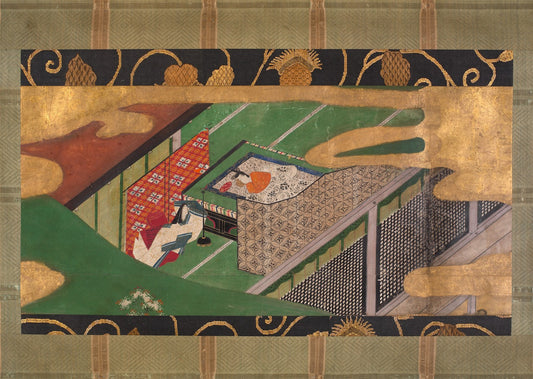Feature image: Bill Braun via Stremmel Gallery
Art class was likely your favorite time of day growing up—considering you read this article from an online art publication: cheap scissors, grainy construction paper, and grape-scented markers. Back then, life was simple. The skies could be purple, dogs could have two legs, and everybody had stick limbs. Though we can’t physically go back to arts and crafts, we can revisit art that gives us a warm, nostalgic feeling accompanied by a moment of a tax and responsibility-free life, a time before heartbreak, loss, and a 9-to-5 schedule.
Bill Braun
Hyperrealism and Photorealism are common art genres containing intense details that make the painting question your judgment. Bill Braun approaches Hyperrealism differently than what we typically see. He uses a painting trick to deceive the eye: trompe l’oeil (or “to deceive the eye”). He has a unique outlook on realism, straying away from the common still-life or portrait. Braun revisits the visceral memory of arts and crafts. His paintings—yes, he uses paint and not paper—eerily resemble the grainy construction paper we all remember. The details of his paintings are not short of meticulous detail. From the shine on the staple to the tiny construction paper crinkles, Braun’s work is so realistic that you begin questioning every photograph: is it real or just a painting?

A common theme in Braun’s nostalgic paintings is the creasing in the paper. There is little control over handling something when you’re young; cutting the paper with cheap Dollar Store scissors is a recipe for a crease-covered project. The classic snowflake-cutting technique is one of primary school’s key symbols. Braun’s take on adolescent creativity shines through the simple shapes and lack of keen detail: the snow being little pillows on the tree branches and skinny slits to mimic leaves.
This specific painting highlights the uneven cuttings children are known to make. The horses lack smooth edges to resemble construction paper accurately. Braun’s intentional flower placement folding behind the paper grass blades is a subtle but important detail. Concerning painting techniques, this adds dimension and depth. But in comparison to a child’s construction paper project, it highlights how creatively intelligent children can be; placing the flower behind the grass shows cognitive thinking skills—something children of this age are beginning to grasp.
Notice how there is a slight shadow under the horse’s belly to indicate the paper lifting. Details such as these are what make Braun’s work truly magnificent and eye-catching.
Cesar Santander
Cesar Santander captures nostalgia with a paintbrush. His ability to accurately illustrate vintage toys and the wear and tear sets him apart from other artists. Santander’s art catalog is a dust-free version of your parent’s attic, going through old bins of toys from your childhood and recollecting distant memories.

Going to amusement parks as a kid was the closest thing to a movie set most kids will ever get: the large structures, walking animal mascots, and cacophony of screaming, crying, and laughing. Amusement parks are one of the few things in life you enjoy as a kid and as an adult—though it is never as fun when you’re 25 and have perpetual motion sickness.
The merry-go-round: the face of amusement parks and county fairs. Santander delicately and intricately captures the majesty of carousel horses. From the glistening highlight to signify the shiny paint to the extravagant mane, Santander’s “Carousels” series is a sliver of simplicity most of us have not experienced in years. The painted blurred background resembles the focus of a photograph—or even a memory.

Verticles is an eye-catching painting not just for its realism but the immediate flush of nostalgia that washes over you at first glance. In his series “Crayons,” Santander revisits the symbol of childhood arts and crafts: Crayola crayons. Prior to online editors and digital coloring books, a classic crayon and piece of printing paper was the epitome of a creative outlet.
Santander’s talent to accurately paint old used crayons is exceptional: the shine from the waxy crayons to the tiny fuzz from the Crayola wrapping. Aside from his incredible attention to detail, Santander accurately paints a vintage “photo.” This painting feels like an old photograph that has seen sticky fingerprints and years of dust. But it all comes back to that old familiar feeling of art class.
Walter Wick
Like me and many others, Walter Wick was the creator of your indoor recess experience. Wick was I SPY’s leading set creator that made its way to books in your home and classroom. Unlike Braun and Santander, Wick uses photography to capture the otherworldly scenes in the I SPY books. The trick to making the I SPY visuals so entrancingly unique is the focus on perception.
Wick resorted to multiple media to perfect his sets’ optical illusion. I SPY Treasure Hunt features a series of thematic beach photos with hidden objects. Wick created “The Beach,” a shipwreck scene in this edition. He used rippled Plexiglas to mimic the ocean’s texture and cardboard with small cutouts to control the lighting. Aside from his magic on set, riddle writer Jean Marzollo and Wick collaborated to create these spectacular books. Wick had to ensure each of Marzollo’s hidden figures was strategically placed, making the scene look creatively cohesive.
The “I SPY” Fantasy book features “Clouds”—a dreamy, heavenly scene with puffy cotton clouds. Each little detail coincides with Marzollo’s riddles. From the tiny kite to the magician’s hat, “Clouds” is a dreamscape filled with hidden figures.
During the process of creating “Clouds” (and most of Wick’s other “I SPY” books), Wick experimented with lighting and depth perception to make the photo look like the sky goes on for miles. After finishing touches in Photoshop to emphasize highlights, shadows, color, and string removal, Wick’s “Clouds” transformed 30 minutes of recess into a DreamWorks Animation fantasy.
After days of rush hour traffic, waking up before the sun is up, and dreading tax season, yearning for the simplicity of art class is understandable. Old toys, building blocks, and Crayola marker stains cluster to form nostalgia that peaks through occasionally—especially when we see it portrayed in modern art.
©ArtRKL™️ LLC 2021-2024. All rights reserved. This material may not be published, broadcast, rewritten or redistributed. ArtRKL™️ and its underscore design indicate trademarks of ArtRKL™️ LLC and its subsidiaries.










